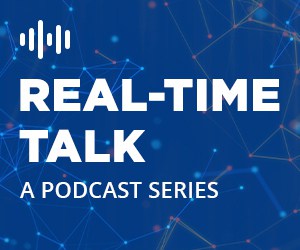
The Application Generation has arrived and they’re making it their mission to expose and eliminate poorly performing applications. Now is the time to take a look at your tech stack to ensure you are equipped to offer optimized performance, can navigate disruptions easily, and are delivering the experience that today’s users expect.
Consumers around the world are becoming more sophisticated and discerning in their use of applications and digital services, and they are now far less forgiving toward brands that fail to provide high-quality, responsive digital experiences.
Every two years, we survey global consumers to see how their attitudes and behaviors toward applications and digital services have evolved. In our latest App Attention Index, we found that 62% of consumers claim their expectations for digital experiences are far higher now than they were two years ago. They now have a low tolerance for when they encounter a problem and are actively looking to ditch poorly performing applications, deleting more applications on average than they are downloading.
This shift in attitudes and behaviors is most noticeable with a cohort of younger consumers ages 18-34. This ‘Application Generation’ relied on applications to navigate through the pandemic and support nearly every aspect of how they live and work—their education, careers, and even how they stay connected to friends.
Today, they pride themselves on using only the most innovative, intuitive, and secure applications. They expect each and every digital experience to add value to their lives, and they will hold any brand or application that falls short of this accountable. This shift in expectation is critical for all companies who are delivering digital experiences.
See also: Full-Stack Observability Improves Uptime, Lessens Outage Cost
Defining characteristics of the Application Generation
Application owners and IT teams need to notice the changing motivations and behaviors of billions of young, hyper-tech-savvy consumers around the world. These four key characteristics of the Application Generation are critical for those who are responsible for ensuring a seamless digital experience:
1) Heavy use of digital services is a reality
On average, they use 41 different applications each month, compared to 30 among people ages 35 and above. Whether it’s fitness classes, collaboration and productivity tools for work or education, access to healthcare and public services, or entertainment streaming, the Application Generation is most likely to rely on digital services, which means this user base is an influential audience for brands that offer digital services.
2) It’s key to be mindful about the use of applications
While younger consumers are more reliant on digital services, they are also more deliberate in their use of these services. Sixty-seven percent claim they are looking to control or limit the number of applications they are using. The Application Generation is constantly evaluating the relevance and value of digital services, and they’re actively looking to remove the ‘application clutter’ that has built up over recent years.
3) Super Apps bring optimism
This new generation of application users is constantly looking for the next evolution in applications and digital services. They are actively seeking to adopt and experiment with the most cutting-edge technologies and experience. That’s why 80% of them feel positive about the prospect of using Super Apps, which combine multiple digital services into a single application. They are open to the potential benefits of this new phenomenon, including saving time, creating simplicity, and reducing application clutter. While Super Apps could introduce greater complexity to IT ecosystems, they can also bring more robust data-driven insights, market opportunities, and integration between disparate services.
4) Action will likely be taken against applications that don’t perform
Ninety-three percent of these young consumers have already encountered a poorly performing application in the last year. With the easing of the pandemic and the opportunity to interact with others outside of just digital tools, they can be more discerning about the applications they use. Similarly, on average, they’re deleting as many as seven applications due to bad digital experiences in the last 12 months, with 70% reporting they’re not just deleting applications; they are actively warning other people against using digital services that don’t perform properly.
A final word
As consumer expectations continue to evolve, organizations urgently need to ensure they are able to deliver seamless digital experiences at all times. This means equipping their IT teams with the right tools and insights to manage and optimize application availability, performance, and security— which becomes even more challenging with migrations to the cloud, the introduction of hybrid and multi-cloud environments, and rising cybersecurity threats.
Among modern tools and services that enable better digital experiences, application observability is now even more essential. It provides IT teams with unified visibility across increasingly complex and dispersed hybrid application environments. And it rapidly detects issues and understands root causes. The introduction of automation will allow for even more robust detection and prediction capabilities. Additionally, by correlating application performance and security data with key business metrics, IT teams can prioritize those issues that pose the biggest threat to digital experience.
The reality is that the Application Generation has arrived, and through the download and purchasing decisions, they’re making it their mission to expose and eliminate poorly performing applications. The bar has been raised in terms of what digital experience must be, and those that fail to deliver risk alienating an entire generation of application users. As we kick start a new year, now is the time to take a thoughtful look at your tech stack to ensure you are equipped to offer optimized performance, can navigate disruptions easily, and are delivering the experience that today’s users expect.





























